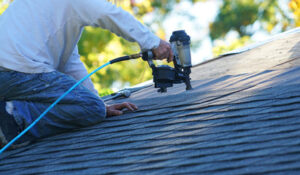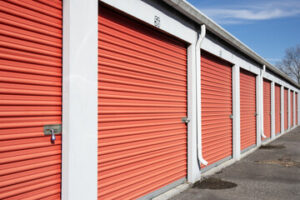A well-executed paint job makes a home stand out to guests and passersby. From vibrant hues that make a statement to subtle finishes that blend harmoniously with the landscape, professional exterior painters can help you achieve your ideal look.
More importantly, a quality painting project helps preserve and protect your house. It guards it against moisture, mildew, pest infestation, extreme weather conditions and other damage. Contact Exterior Painters Naperville IL now!

When it comes to your home, curb appeal matters. It’s the first impression your property makes and can make or break a potential sale. A well-maintained, attractive exterior shows that the property is cared for, and reassures buyers that it will be a good investment. This is why many real estate experts recommend focusing on curb appeal before listing your property.
Curb appeal refers to the visual attractiveness of a property’s exterior, including the garden, walkways, driveways, and parking lot. It is usually influenced by factors such as lawn maintenance, the use of outdoor furniture and lighting, and the color scheme of the house. It also includes details like the type of plants that are planted, the way they are arranged, and the overall layout of the front yard.
It can be difficult to assess and improve your home’s curb appeal, but it is possible to make small changes that will have a big impact. For example, a fresh coat of paint or some new window shutters can instantly brighten up the façade of your home and increase its appeal. Another easy and affordable improvement is to add a planter or window box with flowers. These can be a beautiful addition to any home and are a great way to show off your green thumb.
Aside from the aesthetic benefits, curb appeal can also help to increase your home’s value. According to research, homes with appealing exteriors sell for up to 7% more than those without. This is because prospective buyers are more likely to write a higher offer for a property that they feel is well-cared for and has been nicely maintained.
Additionally, homeowners who invest in curb appeal report greater enjoyment of their homes and a sense of achievement for having completed such an important project. Furthermore, it’s important to note that many of the improvements that can be made to a property’s curb appeal are relatively inexpensive and can be done in a weekend. As a result, they are often seen as an effective and affordable method for increasing the marketability of a property.
Durability
A professional paint job can protect a home from rust, mildew, and other forms of degradation. It can also help maintain its value and extend its lifespan. However, painting a home or commercial property isn’t cheap. It can be expensive to buy and maintain the necessary equipment, purchase or rent the appropriate paints, and cover any other expenses that may come up along the way.
The best exterior painters are committed to providing high-quality, durable results that will last for years to come. They use comprehensive surface preparation methods to create a uniform, stable foundation for the paint. This includes thorough cleaning to remove dirt and contaminants, as well as sanding or scraping to eliminate loose and peeling paint. They also apply primers to ensure optimal adhesion and minimize the likelihood of early failure.
It’s also crucial to choose the right type of paint for your project. The best exterior paints contain higher levels of pigments and premium binders, resulting in thicker coatings with superior durability. The longevity of these coatings can reduce the number of coats needed, saving money on both materials and labor.
The climate and environmental conditions of your area can also have a significant impact on how long your paint lasts. Exposure to harsh sunlight can cause the chemical bonds of paint to break down, causing it to fade or chalk. Homes in coastal areas often experience salt spray, which can accelerate corrosion and eat into the substrate material.
Professional exterior painters are familiar with the local weather patterns, and can advise you on when it’s best to repaint your home or business. They will know when temperatures are optimal for painting and which products to use based on your location.
When you hire a commercial painting company to handle your renovation, they will not only provide beautiful, lasting results but will also check for signs of structural damage or wear and tear. These issues can be difficult to notice, but a professional will spot them before they become major problems. If they are addressed promptly, the paint job can be extended or even saved altogether.
Weather resistance
A common misconception is that exterior painting can only be done under perfect weather conditions—sunny and dry with moderate temperatures. While this is true for many paint jobs, advancements in paint technology and professional techniques have allowed for the possibility of success on even rainy days.
When hiring an exterior painter, look for one with experience and a solid reputation. This will help ensure that the job is completed correctly and with a high level of quality. Moreover, you want to know that the painter is familiar with local weather conditions and can anticipate challenges before they arise.
In addition to temperature, humidity plays a big role in how well exterior paint adheres and dries. High humidity can increase drying times and lead to a less than ideal finish. It also reduces the strength of the paint and makes it more susceptible to damage. In order to get the best results from your paint job, make sure to work with a company that uses a low-humidity coating.
Regardless of the season, outdoor paints can be damaged by sudden changes in temperature and humidity. These fluctuations can cause the paint to crack, bubble, or flake. It’s important to choose a weather-resistant paint that can withstand the elements and protect your home or business.
Another factor to consider when choosing a paint is color retention. A good quality paint should be able to withstand the sun’s harsh UV rays and resist peeling and fading over time. Choose a paint that has a wide spectrum of color options to match your property’s décor and style.
When hiring a professional to complete your exterior painting project, it’s important to schedule the job for a sunny day when moisture is not an issue. A sudden downpour can wash away freshly applied paint and ruin the finish of your project. It’s also a good idea to check the forecast for the upcoming week before starting your project. Ensure that no rain is expected on the day you plan to start and to tape off any areas not being painted.
Aesthetics
A fresh coat of paint may seem like a superficial addition to the exterior of a home, but it offers several logistical benefits. For example, it protects against harsh weather conditions and can save on expensive repairs. It also promotes a healthy living environment by inhibiting the growth of mold and mildew. Additionally, it increases the perceived value of a property and makes it more appealing to potential buyers.
When choosing a painting contractor, ask them about their experience and preferred methods of work. Their answers will provide valuable insight into their skills and professionalism. They may also reveal their ability to work with other construction professionals and meet deadlines. It’s also important to choose a company that uses quality paint, as substandard paints require more layers and are more prone to degradation.
Hiring professional exterior painters is an excellent investment that will save you time and stress. The team will use the proper equipment to achieve a smooth and even finish. They can also help you select a color scheme that complements your home’s architectural style. In addition, they’ll advise you on the best times of year for exterior painting, based on your local climate.
Exterior painting can be a messy job, and it’s essential to prepare for this before starting. Make sure you have a sturdy ladder and a brush, roller, and scraper for the task. You’ll also want to have a roll of painter’s tape for clean edges. You should also have a good pair of overalls or old clothes to protect yourself from the mess.
A well-painted commercial building is a sign of a business that is professionally managed. This will encourage customers to visit the store, and it will promote brand loyalty. Professional painters know how to choose the right colors for a business, and they will use them consistently throughout the building. This will ensure that the brand image is consistent with the company’s personality and tone. It will also increase brand recognition, which is important for business growth. This type of attention to detail will ultimately make the difference between a successful and failed business.








